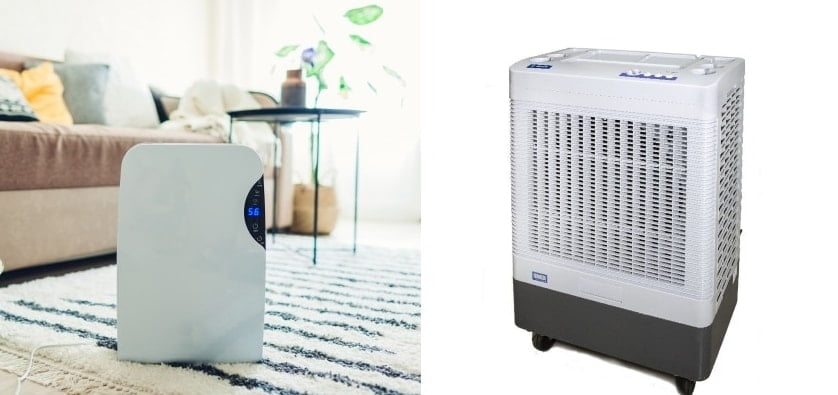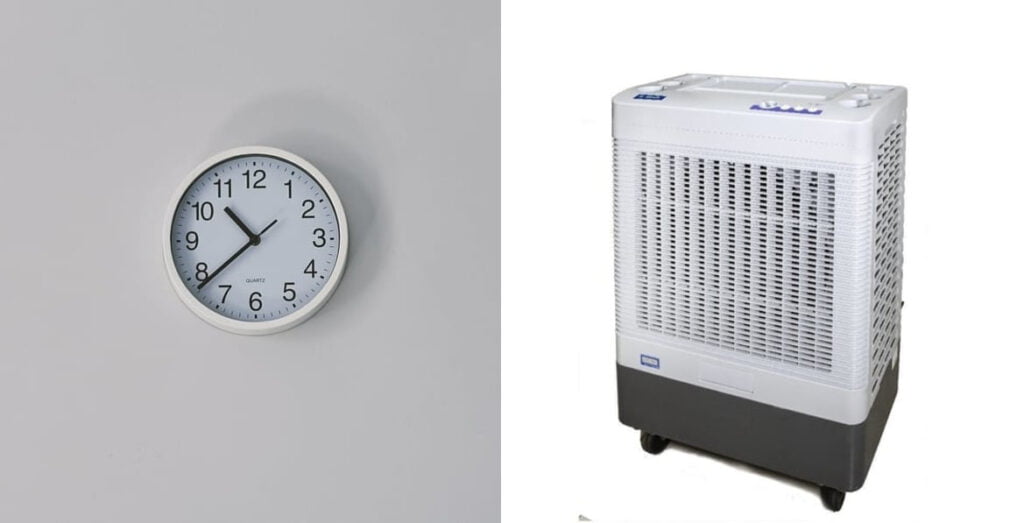Last Updated on January 1, 2024
Swamp coolers are a great way to attain comfortable temperatures and humidity indoors and outdoors. They are also known as evaporative coolers. However, they are electrical appliances and just like any electrical appliance they are prone to breakage. One of the problems you may face with your swamp cooler is tripping of circuit breaker after you turn it on or run it for a while.
Swamp cooler trips circuit breaker, when turned on or after running for a while, when it causes more current to flow through the circuit than breaker limit. Common reasons include damaged or short electrical wiring, water in electric lines, faulty blower motor or ground fault. An overloaded circuit can also cause breaker to trip.
Most often the reason for tripping of breaker due to swamp cooler operation is electrical wiring. Any shortage allows all the current in the home to move through the same circuit. This results in the amperage through that circuit sufficiently high to trip the breaker.
By the way circuit breakers are very important to prevent damage to your appliances and most importantly to you. So it is a good idea to not try to bypass the current path.
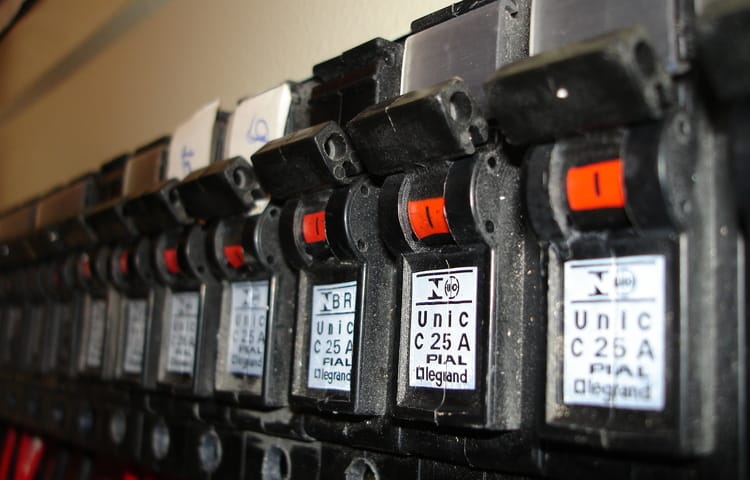
I have tried to gather the most probable causes for this problem and their solutions. I advise you to go through your swamp cooler step by step to identify these problems. Even if you are able to identify the problems but not rectify them, it is sufficiently good. As this will help you to decide whether to repair components, buy new ones or buy a new swamp cooler.
Role of Circuit Breaker in Your Home
Circuit breaker is an automatic switch that prevents overcurrent in a circuit. Whenever the amperage is higher than the limit defined by breaker it switches OFF. This protects appliances in your home from burning and prevents fire.
The principle on which circuit breaker operates is electromagnetism. In a simple configuration, there are two contacts that are connected by mechanical pressure. This pressure is provided by potential energy from deforming metal spring, compressed air or by hydraulic pressure.
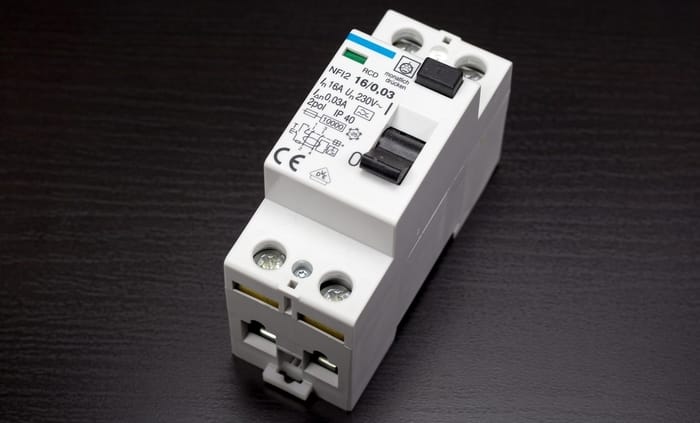
When electric current exceeds the rated amperage of breaker, electromagnetic attraction overcomes mechanical pressure and contact breaks. So no current passes any more.
The good thing about circuit breakers is that you can reset them. If breaker automatically switches OFF, due to any fault in the wiring, you can turn it back ON unlike fuses that have to be replaced. If you wish you can also turn them ON and OFF manually.
Note: Circuit breakers can handle about 80 percent of amperage compared to maximum rated value. This means that if you have a breaker of 20 amps then it will handle around 16 amps.
Short Circuiting in Your Swamp Cooler
Electric circuit works by the application of a ‘hot wire’ and ‘neutral wire’. Electric current flows from the breaker panel into the hot wire, which is also called ‘live wire’. Electricity is used up by your appliance and then unwanted electricity is taken away by neutral wire back to breaker panel.
In case live wire and neutral wire directly connect with each other, it leads to a condition called short circuiting. It will cause a large amount of current to flow through these wires. Short circuiting may cause overheating, circuit damage or even fire or explosion.
This is where your circuit breaker will play the role of disconnecting the circuit. It will stop the current to flow through the circuit and keep you and your appliances safe. You can always reset the breaker after identifying and fixing the problem.
Now if you reset the breaker but it keeps tripping, then this could be due to short circuit. Don’t try to force the handle of your circuit breaker to turn ON if it keeps going back. This could be an indication that there is a fault in the circuit, whether in or out of your swamp cooler.
Usually there are multiple circuit breakers in your home for different circuits. The amperage of the circuit breaker depends on the electric current that flows through it and there by dependent on appliances the run on it.
Why Your Evaporative Cooler Keeps Tripping Breaker?
Let’s say you happen to use your swamp cooler on a specific circuit that turns the breaker off. There are two conditions for that:
Condition 1: Breaker Trips When You Plug-In Any Appliance
If your breaker turns off without plugging in your swamp cooler or plugging in any equivalent device, then the problem is most probably not in your swamp cooler.
So plug in any other device in the same plug that caused your breaker to trip (when you previously attached your swamp cooler with it). The device should have electric power consumption same or more than your swamp cooler. If the breaker trips you know that your evaporative cooler is not the culprit.
Condition 2: Breaker Trips Only When You Plug-In Your Swamp Cooler
If the breaker trips only if you specifically turn your swamp cooler ON, then problem is likely to be in your cooler. This means that most probably component(s) inside your evaporative cooler are faulty.
In either case, these are the problems that could be causing your breaker to trip when your turn your swamp cooler ON:
1. Damaged or Poor Insulation Is Causing Short Circuit
Hot and Neutral wires are separated from each other by insulation. A damaged insulation can result in touching of conductive material in these wires. Insulation may also get worn out when it gets old.

Either way when the bare supply wires touch each other due to faulty insulation, then electric current will follow its nature i.e. using the path with minimum friction. Thereby causing short circuit in the wiring and tripping the breaker.
Pro Tip: Trace supply wires to see if they are touching with each other, outside and inside of your evaporative cooler. Especially check the joints as bends there could lead to touching of hot and neutral wires by removal of insulation with time.
Make sure animal pests i.e. squirrels, rats and mice are away and don’t interact with wiring within or outside of your swamp cooler. They can damage the insulation and expose wires.
If you are able to identify a rough or burnt insulation but you are not able to fix it then its good enough. You have solved step 1 out of 2. You have saved yourself a lot of time. Just leave it at that and call a certified electrician to do step 2.
2. Inadequate Appliance Internal Wiring
Plugging your swamp cooler makes it a part of the circuit. So, any short circuit in your swamp cooler is equivalent to short circuit anywhere in the entire circuit.
Old plugs, connections or wiring within your swamp cooler may be the reason for internal short circuits. Sometimes loose connections also cause short circuits.
Pro Tip: You can give internal wiring and connections of your swamp cooler a look. If you are able to identify a loose or rusty connection, or burnt or touching wires then they need to be replaced or reconditioned.
Also be careful with testing your connections. If you don’t know how to do it, then call a technician to do it for you. If you are able to identify the fault, I still advice you to not repair internal shortages yourself if you do not have an adequate experience.
3. Internal Shortages Due to Water
Pure water is an excellent insulator of electricity. In fact, there are electronic devices that use pure water as a coolant. It is in contact with current conducting sources but no current passes, only heat passes through it.
However, tap water allows conduction. This is due to the fact that there are salts dissolved in this water. The most common salt is Sodium Chloride (NaCl). In simple terms it is called table salt.
In solution it splits into cations (positive ions) and anions (negative ions). These ions are neutral normally but they facilitate conduction of electricity.
The same will happen if water reaches connections and switches inside your swamp cooler. The ions in tap water would conduct electricity and an internal shortage will be created. This will cause massive current to flow through the water. Hence causing your breaker to trip.
Pro Tip: Check connections and wires inside your swamp cooler. Metal components that consistently contact and spark with water become rusted and worn out. They can be identified by their damaged appearance.
If the current conducting components are damaged due to water then repair or replace them. It water is likely to make contact with them, relocate them away from water if possible. If not cover them properly and seal the to prevent water to reach them.
4. Short Circuiting Due To Faulty Control Switch
Control switch or wall switch allows you to control the functioning of your swamp cooler. It enables you to operate your swamp cooler at a higher cooling mode, lower cooling mode, high vent, low vent or just operate your pump.
So, electric current will be delivered to blower motor and/or pump by provision of electricity from your switch. If you look at the back of your swamp cooler’s switch you will see a couple of wires going into it. They are usually tightened and fixated by screws.
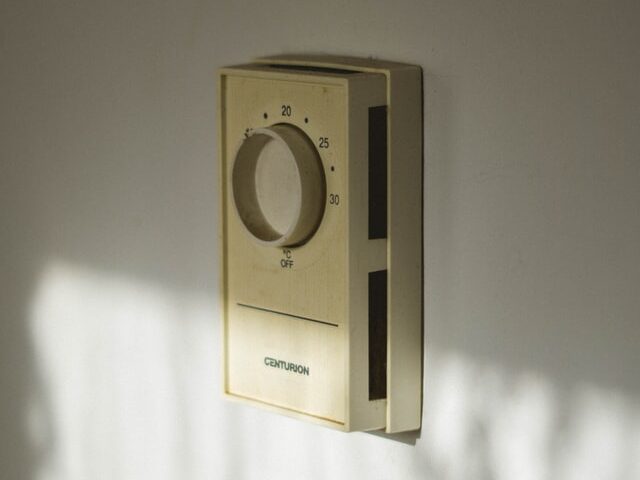
If these wires from wall switch somehow interact with each other, they will cause a short circuit and trip the circuit breaker.
There are multiple reasons why wires could touch each other. One of the reasons may be that insulation of wires have melted due to overheat and the bare wires are touching with each other. Loose connections can cause spark that may damage insulation.
Pro Tip: In either case you could remove the faulty segment of wires, reattach them and and tightened them. Make sure that you have sufficient insulation between the wires where they could touch each other.
Short circuiting in control switch may be due to the reason that it is faulty and not because of the connections. In that case just replace it.
Connections with the new wall switch are easy to do and usually identical to what were earlier. In case you happen to identify that your wall switch is faulty and are going to replace it, go with a better option. Try a digital thermostat.
It will allow more accurate temperature control and automatic functioning. Click here to check specifications.
5. Electrical Motor Overload And Low Resistance
It is also called overcurrent. In this condition a large amount of current flows through motor winding. This current has a magnitude more than required for the motor to work efficiently and harmlessly. High motor current may cause your breaker to trip if it doesn’t damage your motor.
The most common cause for overcurrent is low supply voltage. When voltage is low, motor requires more current to continue operating with the same power and torque. Excessive voltage and short circuited motor components can also lead to high motor current that may trip your circuit breaker.
The most frequent cause of motor failure is low resistance.
Low resistance is a condition of the motor when insulation of the windings is damaged due to overheating or corrosion. It can lead to short circuiting, allowing a large amount of current to flow through your motor.
Pro Tip: Test your motor by only running fan. If swamp cooler is not tripping breaker in ‘pump only’ mode and it is only doing so when you turn venting ON, then this is an indication that motor could be faulty.
The easiest solution, if motor is faulty, is to replace your motor. However, you may get your motor inspected by a technician to know if it is economical to get it repaired.
Low resistance is difficult to resolve. However, you can conveniently identify it. It is recommended that if your motor seems to be the reason for tripping your breaker, you get insulation inspected from a certified technician for signs of damage. In fact, it is a good idea to get your motor inspected in a routine.
6. An Overloaded Circuit
Every circuit in your home has a rated load value of electric current. This value limits the number and size of appliances that can be powered by that circuit.
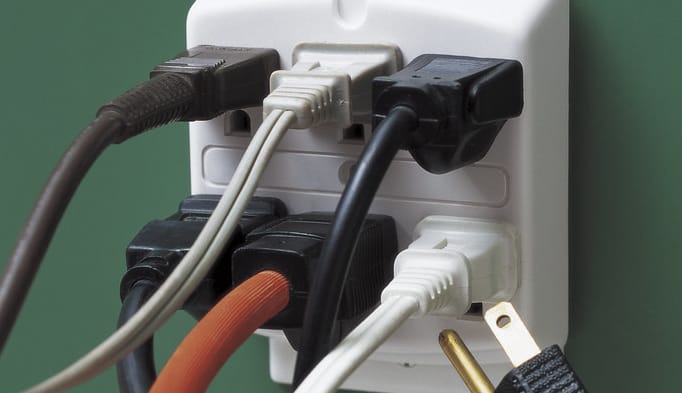
If collective load by appliances is more than the limit of your circuit, then it would cause more current to flow than its capacity. This will result in damage and deterioration of the circuit. May even cause fire.
This is where circuit breaker plays its role. As soon as collective load of appliances exceeds the capacity of a circuit, it will trip. This will prevent electrical wiring in your home and more importantly you.
Pro Tip: If you plug in your swamp cooler in a particular outlet and circuit breaker trips then problem could be circuit overload.
Well how to know for sure? It’s simple, connect your swamp cooler in any other outlet that is not on the same circuit. If it doesn’t trip then most probably you have a circuit overload. If it does, try another outlet on any other circuit just to be sure.
How to Calculate Circuit Loads?
Knowing how many appliances to use with any circuit is fairly easy. All you have to do is multiply your circuit current carrying capacity by the supply voltage in your region.
Allowable Power Consumption (watts) = Circuit Current Limit (amps) * Supply Voltage (volts)
Example: Suppose supply voltage in your region is 120 volts and a circuit in your home can carry electricity of 15 A. Put the values in the formula above, you get 18000 watts. This is the maximum power of the appliances that can operate on that circuit.
So, if all the appliances, that are part of that circuit, have a collective power intake of less than 18000 watts, let’s say 12000 watts, then you are safe. If the power intake is more than the calculated value, then this will cause your wiring to deteriorate if not burn and cause fire.
This is where circuit breaker will play its role. When the current is exceeding the rated value of a circuit that it serves, it will trip. This will prevent your circuit from damage.
A Quick Advice…
Circuit breakers can handle about 80 percent of the power capacity they are rated for. In the above example, maximum circuit capacity of 18000 watts, 80 percent is 14400 watts. So your circuit breaker is likely to trip just as the load exceeds 14400 watts.
Pro Tip: With the inclusion of swamp cooler in a particular circuit (with other appliances), make a rough estimate of power consumption of appliances. Then compare total power consumption with the capacity of your circuit breaker.
Only use swamp cooler, with an outlet in a circuit, if collective power consumption is lower than 80 percent of breaker power rating.
7. Ground Fault Surges
Ground fault is caused in the same way as short circuiting. The only difference is that in ground fault hot wire comes in contact with the ground wire, instead of neutral wire.
This causes a large amount of current to flow to the ground, more than which circuit can handle. The circuit breaker protects circuit by disconnecting the current flow.
If your swamp cooler trips breaker by plugging in a particular outlet, then ground fault might be the reason for that.
Pro Tip: Open the outlet that causes breaker to trip, despite low power consumption in a circuit. Check that hot wire is not connecting with ground wire or neutral wire.
If they do, separate them, get rid of faulty segment of wires and reattach at the appropriate location. Add insulation where you think it is not enough.
Ground in an outlet may be in a form of metal element. It is connected to a main ground wire of your home.
Note: Be careful when opening an outlet. Confirm twice that electricity is disconnected. It is recommended that you use safety gloves (yes, even with a disconnected circuit).
Remember, be safe. If you are still not able to identify the problem or don’t know how to fix it, call a certified electrician to do it for you.



